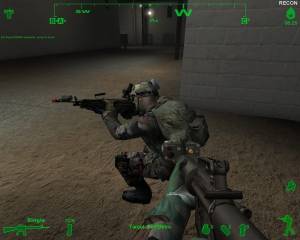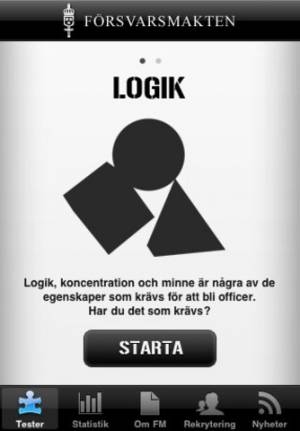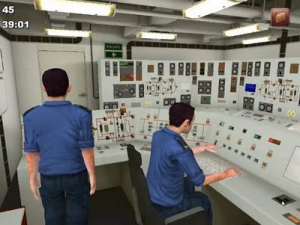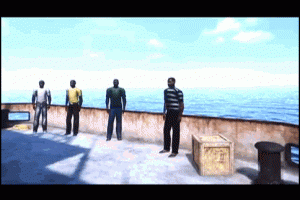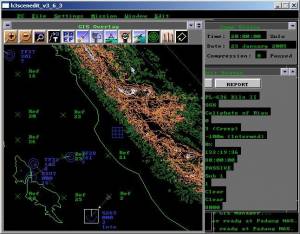Game Classification
Hutspiel Army ORO (Operations Research Office) predecessor of RAC (Johns Hopkins University) (U.S.A.), Army ORO (Operations Research Office) predecessor of RAC (Johns Hopkins University) (U.S.A.), 1955
Classification
RETRO SERIOUS GAME(Exergame)
Keywords
Purpose
Besides play, this title features the following intents:- Training
Market
This title is used by the following domains:- Military & Defence
- Corporate
Audience
This title targets the following audience:Age : 17 to 25 years old / 25 to 35 years old
Professionals
Gameplay
The gameplay of this title is Game-based(designed with stated goals)
Similar games
 "HUTSPIEL is a theater-level war game directed to the study of the effects of various employments of tactical nuclear weapons and conventional air support on the defense of stabilized positions in Western Europe. The game was played by two persons, Red and Blue, one representing the NATO commander and the other the USSR theater commander. The situation played was one that might have occurred along the Rhine River in the summer of 1955. Initial conditions represented resources estimated to be available in event of an unexpected Soviet attack In the summer of 1955; full-scale values represented resources estimated to be available at the end of a 3-month buildup. The combat area consisted of two Army group sectors, each with a frontage of about 150 miles containing front-line divisions aggregated to include tactical reserves, airfields, and forward supply depots. The Blue theater included the main NATO military supply system, transport facilities, and troops in France, Belgium, and West Germany. The Red theater contained the Soviet supply installations, transport lines, and troops committed west of the Oder-Neisse line. Troop reinforcements and materiel resupply from outside the theater were continuous throughout the play of the game.
"HUTSPIEL is a theater-level war game directed to the study of the effects of various employments of tactical nuclear weapons and conventional air support on the defense of stabilized positions in Western Europe. The game was played by two persons, Red and Blue, one representing the NATO commander and the other the USSR theater commander. The situation played was one that might have occurred along the Rhine River in the summer of 1955. Initial conditions represented resources estimated to be available in event of an unexpected Soviet attack In the summer of 1955; full-scale values represented resources estimated to be available at the end of a 3-month buildup. The combat area consisted of two Army group sectors, each with a frontage of about 150 miles containing front-line divisions aggregated to include tactical reserves, airfields, and forward supply depots. The Blue theater included the main NATO military supply system, transport facilities, and troops in France, Belgium, and West Germany. The Red theater contained the Soviet supply installations, transport lines, and troops committed west of the Oder-Neisse line. Troop reinforcements and materiel resupply from outside the theater were continuous throughout the play of the game.
The forces were symmetrical on the two sides as regards to type; however, numerical strengths and exchange rates differed. Each side employed ground forces, tactical aircraft, and wclear weapons and used various installations including airfields, supply depots, and transportation. The combat forces were divided between effectives and ineffectives in each sector and between recuperable and reserve troops in the rear zones. Tactical aircraft were aggregated into a single type for all missions: nuclear weapons delivery, interception, conventional bombing, and ground-support operations. The aircraft themselves were considered to be either combat ready or deadlined. The aircraft sorties increased enemy casualties indirectly by disruption, disorganization, and neutralization.
The model distinguished between two types of supplies: petroleum products and ammunition. Supplies were transported, consumed, and destroyed throughout the game. rj ransportation was represented by two components-railroad rolling stock and rail net. The rolling stock was either damaged or undamaged, and the rail net undamaged, moderately damaged, or severely damaged. The play continued until either the ratio of ineffec lve to active troops in a sector reacaied an arbitrary value, or until active troop strengths in a sector were so reduced that the line could not be manned. Player decisions consisted of allocations of troops among sectors and allocations of nuclear weapons and aircraft sorties among targets. Permissible targets were troops, airfields, depots, and transportation facilities in the sector and in the theater..." [Source : Computer-Aided Information Systems for Gaming]
Distribution : Commercial
Platform(s) : GEDA (Goodyear Electronic Differential Analyzer) - PC (Windows)
 Français
Français English
English


